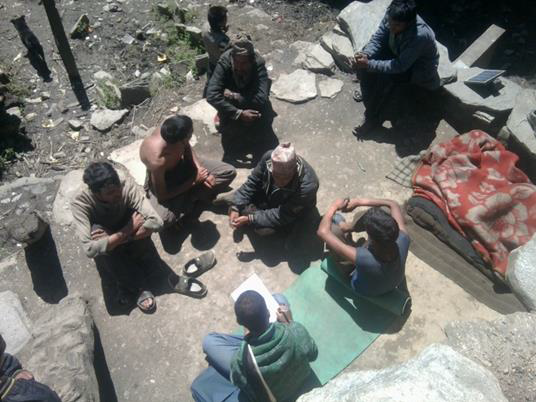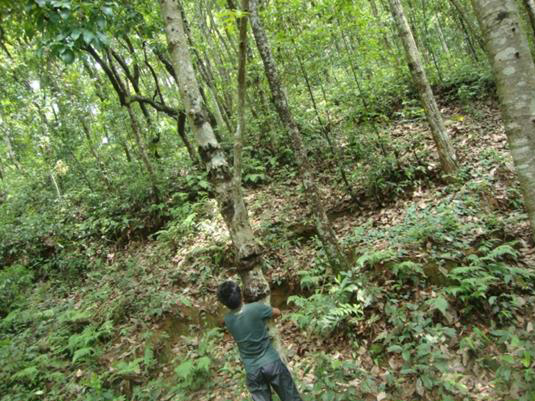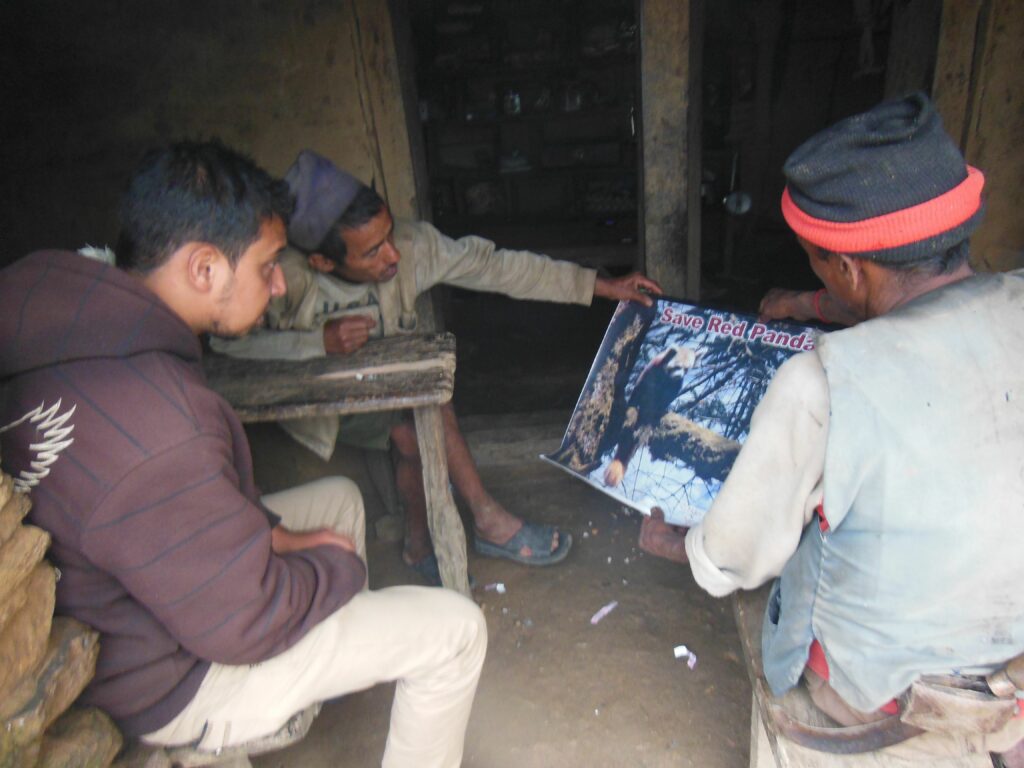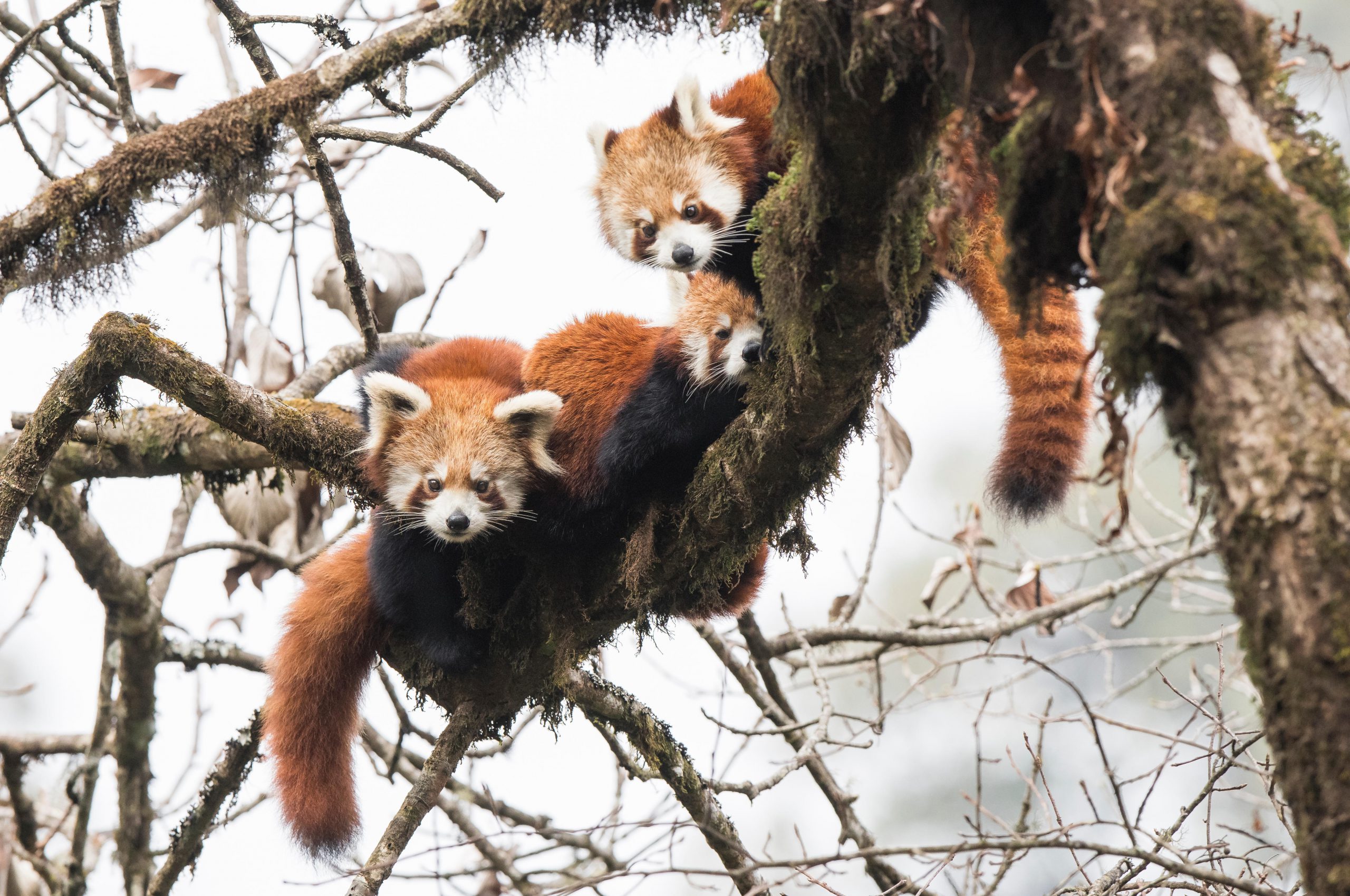The project team has interviewed important ‘stakeholders’ who come into contact with the Red panda: park rangers and people who work in the buffer zones of national parks and conservation areas, but also farmers, shepherds, foresters, teachers, monks and law enforcement officers. The most important factors determining the distribution of the Red panda are altitude, vegetation and the aspect of a mountain slope. These factors will all be analysed in the research area, especially between 2,800m and 4,000m altitude. Reports indicate that in Nepal, India and Bhutan the Red panda only lives at these altitudes. Research has been carried out into habitat selection and sightings were recorded. A detailed distribution map has been composed, which also includes data gathered during earlier research in Nepal. The distribution map will not only help in determining (large) gaps in the distribution of the Red panda, but will also help identify (possible) corridors between protected areas or pinpoint those areas where corridors could be created. In addition, predictions can be made as to the effects of climate change on the distribution of the Red panda by comparing the current data with data from earlier research in Nepal.
Results
Despite the fact that Red pandas occurred in the subtropical and temperate forest between 2,800m – 4,000m associated with bamboo thicket, a similar habitat to the present study areas of ANCA and KNP, the team did not find any Red pandas or any signs in both areas. In contrast, the results of social survey in ANCA indicated that the presence of Red pandas in ANCA. However, it seems that local people have limited knowledge about Red pandas, so results should be taken with caution. Further, the use of non-invasive technology such as camera trapping should be employed to confirm presence or absence of Red pandas in the study areas.





